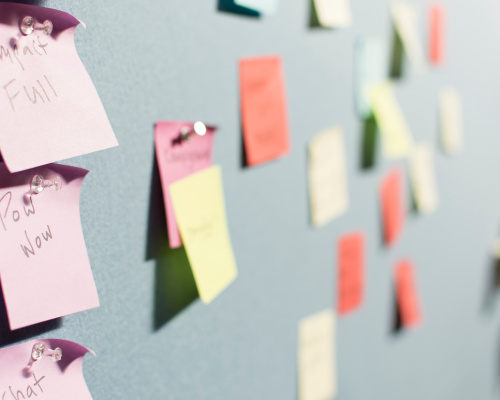Professional Learning: From Good to Great
Date
Whether you’re a national corporation or a small private school, you’re faced with the question: What makes for valuable Professional Development?
In our work, we frequently collaborate with organizations to discuss what PD can and should look like. There is a plethora of research on best practices and models for professional learning experiences for educators. But how do we make these experiences rich, sustainable, and personal?
Whether face-to-face or virtual, here are our best practices when we create and design learning experiences.
Professional Learning...
...Is Content-Specific
It’s not enough to be hypothetically compelling: learners must be able to see curricular and pedagogical connections for their Monday morning. Content focused professional learning experiences have specific learning goals, and are grounded in things like solid instructional practice and seamlessly embedded technology use. People should be able to visualize and then actualize how what they’re learning will intentionally affect students.
...Provides Hands-On Time
All professional learning experiences should provide chances to actively learn and use content. Educators need time to not only explore resources, information, and tools, but also the time to put these things into practice. Sometimes this is through facilitator-led activities and sometimes this is self-paced exploration; both result in some type of practice educators can immediately use with students. By creating environments where learners are given the chance to actively engage, we make it safe to take risks, fail forward, test, and iterate ideas.
...Models and Acknowledges Instructional Practices
Remember: during professional learning, there is a room full of students deserving of pedagogical intentionality, just as with a classroom of children. Actively acknowledging teaching strategies—“I’ll give you a moment to think before you respond”—allows the learner to see it in action, helping them visualize how to bring the experience to their classroom for their students. This includes intentionally embedded technology use, time for reflection, and opportunities for both giving and receiving feedback. Decomposing professional learning in this way, in real time, helps people better understand the pedagogical choices behind building the experience.
...Promotes Collaboration
Educators don’t get enough time to collaborate, so strong PD builds it in! This might be guided or scaffolded learning activities where learners use each others’ expertise and skills to solve problems or design and create new products or understandings, or it may be team challenges that they complete using each other for support. Regardless of how, learners need time to practice collaborating in a safe space. In a virtual environment, consider how to include synchronous components that allow “all the brains in the room” to be together and connect. This might include webinars, Twitter chats, or live discussions; and regardless of the method, learners can engage and learn so much more through talking to each other, building relationships.
...Builds Time for Feedback and Reflection
During any learning experience, people must have time for both low-stakes feedback and to reflect on not only what they’re learning, but how this learning makes them feel, what they will take from it, and how the learning could have been more effective. Garnering feedback from participants helps to inform the design of professional learning experiences moving forward, and can help us see professional learning as an experience that evolves over time with peoples’ needs and wants.
...Offers Sustained Support and Accountability
Planning and preparing for sustainability can be hard, but is so necessary for any kind of professional learning. When the work is done and the professional learning experience is over, it’s important to leave people with momentum, capacity, and expertise to continue on. In order to create sustainability, professional learning must include coaching and follow-up to help people implement what they’re learning. Accountability partners can be a wonderful way to institute this type of support, as well as help build collegial relationships and encourage discourse around professional practice and student learning.
...Flexes through Agile Facilitation
It’s essential to remember that while facilitators may determine learning goals for the experience, we must acknowledge that our own intentions being realized isn’t the point — the focus should be on the impact that happens during and after the experience itself. Letting go of our own intentions allows us, as facilitators, to see opportunities to pivot and take advantage of teachable moments. If people have the opportunity to pursue their own learning goals, we have to establish a culture where inquiry is encouraged and practiced.
Of course, the thing that can establish a truly impactful learning experience—and the one most difficult to measure— is the learners’ actual experience of it. How and what does the experience leave learners feeling? When learners leave a PD experience, are they hopeful about the work they will design? Are they optimistic about impacting their students immediately? And perhaps most importantly: do the learners feel that the facilitators believe in them and their future success? Even if they only grasp and carry with them one piece of the whole experience, learners will remember how you made them feel.
I appreciate my PLN, colleagues, and friends for helping me build on my own understanding and beliefs around professional learning experiences. Specifically, I would like to thank Ben Kort, Sean Russell, Laura Cahill, Bev Satterwhite, Brittany Miller, Mark Samberg, and Greg Garner for their insights.

